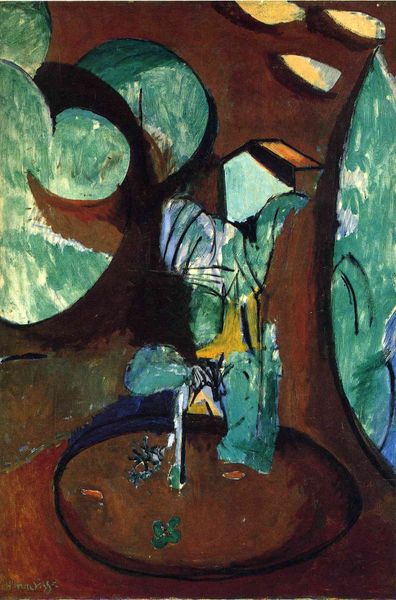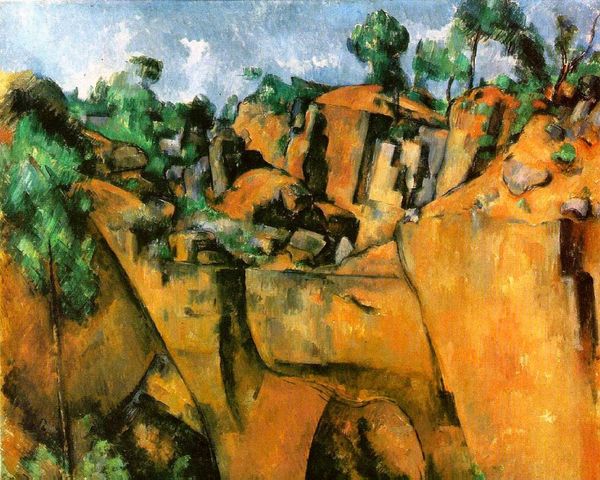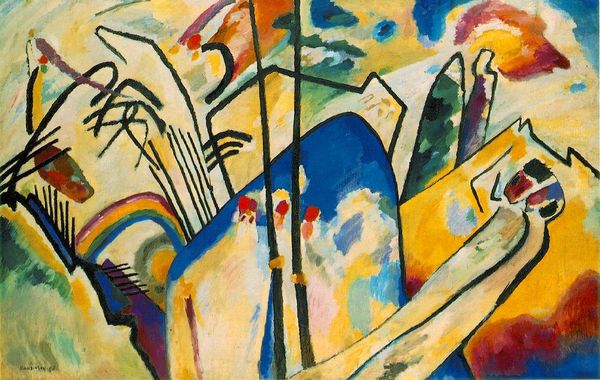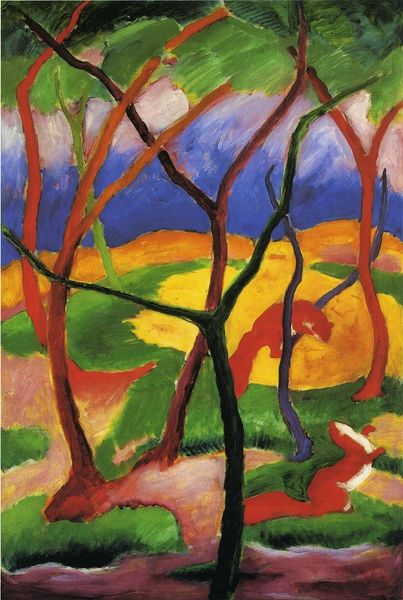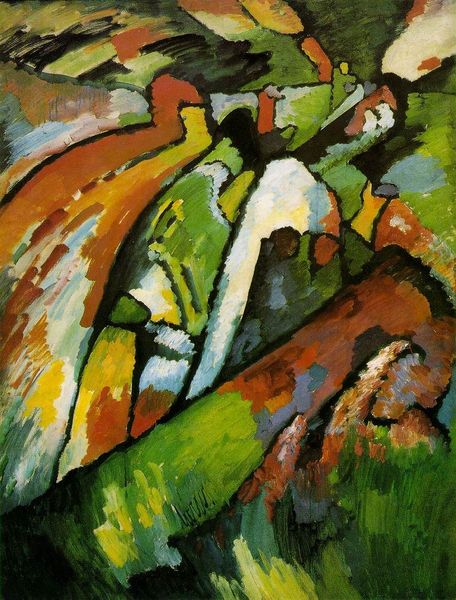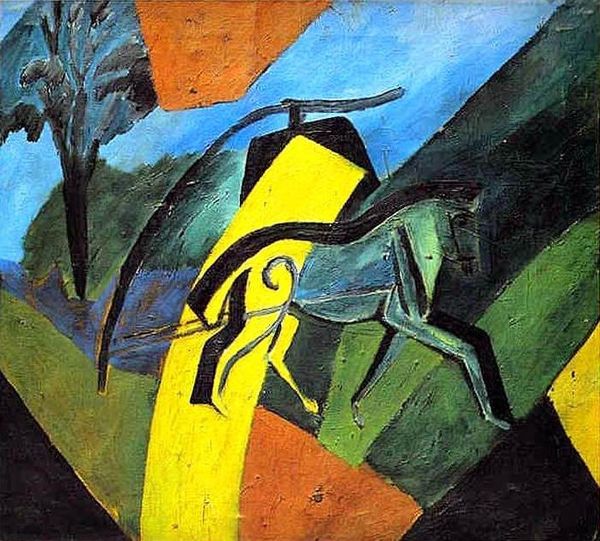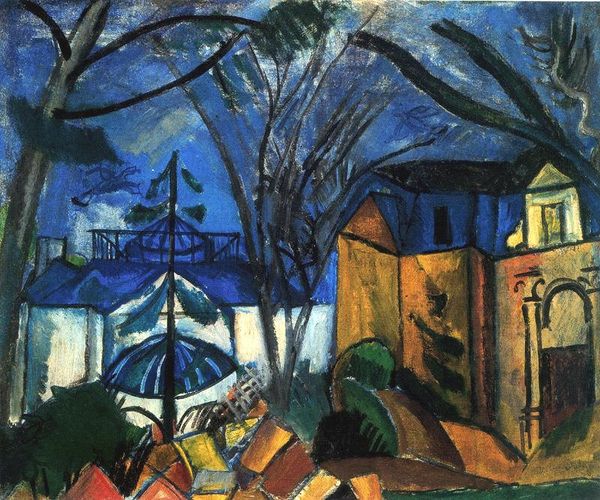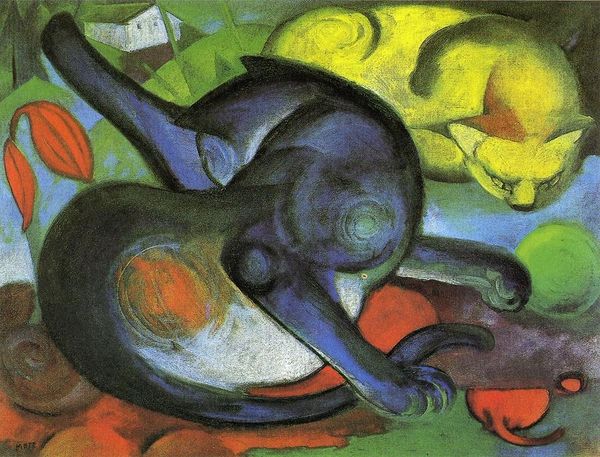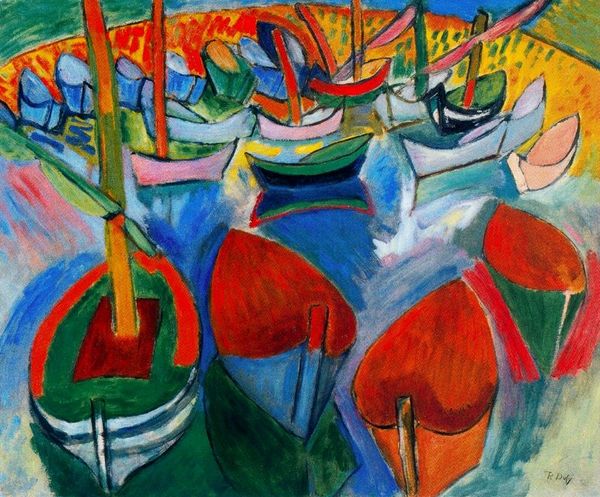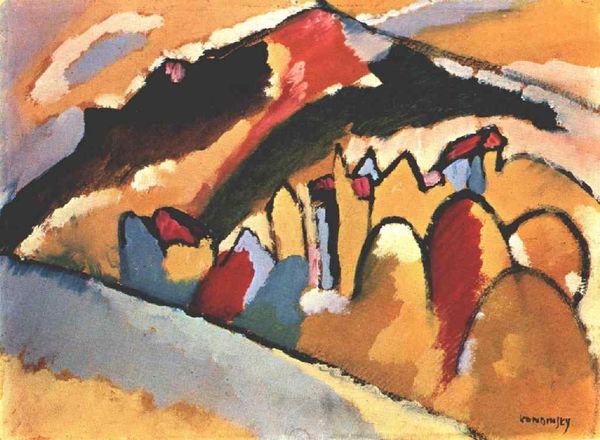
Copyright: Public domain US
Curator: Oh, my. I’m suddenly craving citrus! Before us is David Burliuk’s “Landscape,” painted in 1912. It's currently held at the Thyssen-Bornemisza Museum in Madrid. It looks like an oil-on-canvas exploration of fauvist landscapes, bursting with unapologetically bold color choices. Editor: My first impression is…dynamic. There is a distinct lack of subtlety—it is emotionally direct and vibrates with color and energetic lines. Are we meant to see it as a forest mirrored on the surface of the lake? It seems somewhat abstracted, the colors are expressive and vivid. Curator: It really pushes at the boundaries of what landscape painting could be, doesn't it? He almost seems to want to capture the feeling of a landscape instead of trying to accurately represent how it looks. You see that intense combination of blues, greens and yellows? It feels almost rebellious! I read it as his visual poem—on nature itself! Editor: And within this landscape, there's a definite focus on geometric forms: triangles, ovals. Considering that many traditional cultural understandings see geometric shapes as possessing a natural spiritual power, do you think Burliuk was deliberately invoking that connection to nature through geometric shapes? Curator: It’s entirely possible. There is an energy to that idea. He may be suggesting that geometry *is* nature, a more primitive, distilled interpretation, maybe. Also, I can't help but think about Burliuk’s later involvement in the development of Futurism. I suspect that fascination with shape might well be an overture towards what would soon come. Editor: Fascinating! It also makes me reflect on how this piece is related to cultural memory, both nature's symbolism across cultures but also as an expression of nature's symbolic force *in and of itself*, as you say. What do you make of how later generations would receive it? Curator: Well, I like to imagine viewers walking through modern-day cities and being momentarily reminded of a hidden, raw world beneath the concrete – a world still pulsing with untamed life. I see that reflected back from the painting. I'll confess that Burliuk makes me wonder if abstract art is our truest, most accurate mirror of reality. Editor: That makes so much sense; “Landscape” isn’t just depicting a place, but, even more, it represents how we, in our human condition, truly internalize nature and its profound force in memory and symbolic language.
Comments
No comments
Be the first to comment and join the conversation on the ultimate creative platform.

